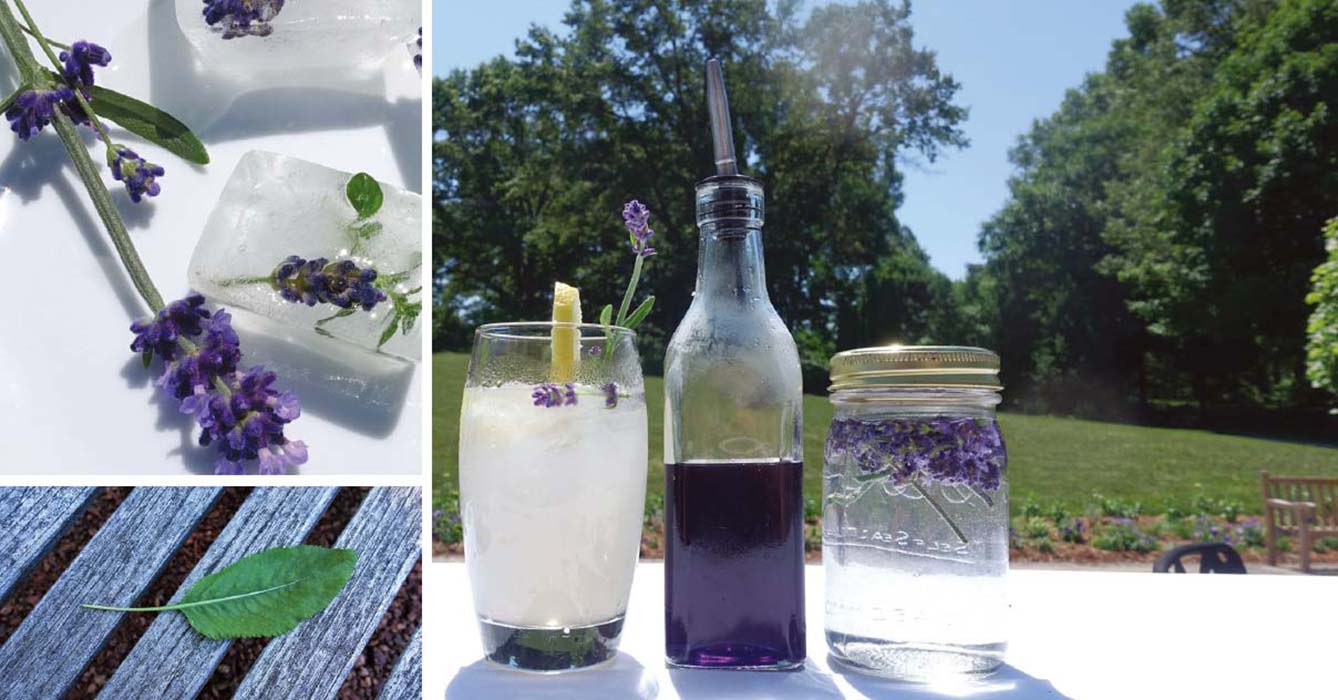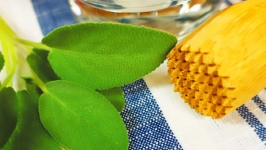DRINK YOUR HERBS
SNIP! MUDDLE! DRINK!
Your next herb discovery can be as simple as that. Casting off the image of being for garnish only, herbs move into center stage for homemade beverages.
From growing your own herbs for drinks the whole family can enjoy to hosting your own do-it-yourself botanical cocktail party, Green Bay Botanical Garden has lots of advice for anyone interested in expanding their palate by experimenting with herbs in beverages.
If you don’t know where to begin selecting an herb to star in your next drink, Lindsay Hendricks, assistant director of horticulture at Green Bay Botanical Garden, has plenty of ideas to get you started.
“Smell first,” Hendricks says as you contemplate what herbs to build a drink around. “Touch the leaves, disrupt the surface and release the essential oils.”
While herbs don’t always taste like they smell, she notes that certainly part of the experience of working with herbs is how we perceive the scent.
“Everybody’s olfactory system is different so what might smell great to you might smell offensive to others,” she says. Another good starting place to find herbs to begin your beverage adventure is with any culinary herb you like in food.
As an example, she says if you like basil in Italian food you might like basil in a mimosa or mojito.
Visitors to Green Bay Botanical Garden can get plenty of ideas by taking a look at the Drinkable Herbs section of the Herb Display Garden near its Schierl Wellhouse. In addition to drinkable herbs, that garden features sections on culinary herbs, medicinal herbs, and herbal supplements.
In the drinkable area, guests will find sweet cicely with its light anise flavor used in wines and mixed drinks, scented geraniums for cold drinks and teas, borage fl owers with their light cucumber flavor for fun ice cubes, and much more.
Noting that with some herbs you use the flowers, others the leaves, and some even the roots, Hendricks says that if you branch out beyond using traditional culinary herbs in your beverages, she recommends doing research to fully understand what parts of the plant to use and whether the plant has any medicinal impact. Green Bay Botanical Garden also encourages consumers to check with their doctor to see if using a particular herb is appropriate for them.
If the leaf of the herb plant is to be used, Hendricks says that herb is a good candidate to dry for making tea, extending the herb’s use into fall and winter. Sweetgrass, lemon verbena and apple mint are three such herbs.
“Muddle gently, you don’t want to destroy the herb to the point it’s completely macerated. Doing so breaks down most of the chemical compounds that are within the leaves. If you want to taste the essential oils, you need to leave some in there.” — Lindsay Hendricks
In preparing beverages with herbs, Hendricks notes that it is important to take care in “muddling” or crushing the herbs, which release the essential oils that bring forth both the scent and the flavor.
“Muddle gently,” she says. “You don’t want to destroy the herb to the point it’s completely macerated. Doing so breaks down most of the chemical compounds that are within the leaves. If you want to taste the essential oils, you need to leave some in there.”
Drinking herbs concoctions is far from new, despite its recent popularity. One herb from yesteryear at Green Bay Botanical Garden is costmary, also known as “bible leaf.”
While the herb was once used to flavor beer, parishioners were also known to place a leaf between pages of their Bible because the scent was so strong, a whiff could keep them from dozing off during sermons.
“It must have been your weekend plant,” Hendricks laughs. “Drink your beer on Saturday and keep you awake in church on Sunday.”
For those wishing to expand both their palate with drinkable herbs and their gardening skills by growing them, her fi rst suggestion is to start small.

Eileen Metzler and the DIY Edible Herb Botanical Bar at the Green Bay Botanical Garden. RIGHT: Drinkable purple basil.
“Don’t be afraid to try out growing a new plant that you aren’t familiar with,” she advises. “If it dies, next year grow something different. That’s part of the learning process.”
“Each year you can grow something new, and before you know it, you are an herb expert,” Hendricks says.
Green Bay Botanical Garden has seen increasing demand for prepared herbal beverages at their catered events and large public events, says Eileen Metzler, sales and events director for the organization.
Infused waters like rosemary watermelon, blackberry sage and pineapple mint are now standard on their catering beverage menu, along with craft cocktails like rosemary vodka lemonade. Metzler notes party hosts are also frequently looking for a custom concoction or a signature cocktail for their event and she credits the popularity of fruit beers for evolving consumers’ palates to pique that demand in herbal cocktails.
Metzler suggests herb enthusiasts consider adding a do-it-yourself botanical bar for their backyard parties, outdoor events and even bridal showers. Whether you have grown the herbs yourself, bought the plants at a local greenhouse, or just picked up a bunch at the grocery store – she says any of these ways can be your starting point.
For party success, Metzler breaks making botanical cocktails into a four-step process:
- Snip your herb and add a slice of citrus fruit.
- Add a splash of floral syrup and gently muddle to release oils and flavor.
- For adult beverages, add a gin or vodka.
- Top off with tonic, club soda or seltzer water.
She says herbal botanical cocktails have been a huge hit at Garden events. “When we set up our DIY herbal botanical station for TasteBud, people tried one herbal combination, then came back to try another.”
Garden volunteers have constructed two wooden pallet stands to display herbs, and members of the Northeast Wisconsin Herb Society assisted with education during the TasteBud botanical bar.
“Events at Green Bay Botanical Garden are the perfect backdrop for tasting herbal beverages. You want to experience plant beauty in a new dimension, and exploring botanical cocktails is a great way to do that.”
For more information on drinkable herbs, visit: gbbg.org/gardening-at-home/hot-topics.







